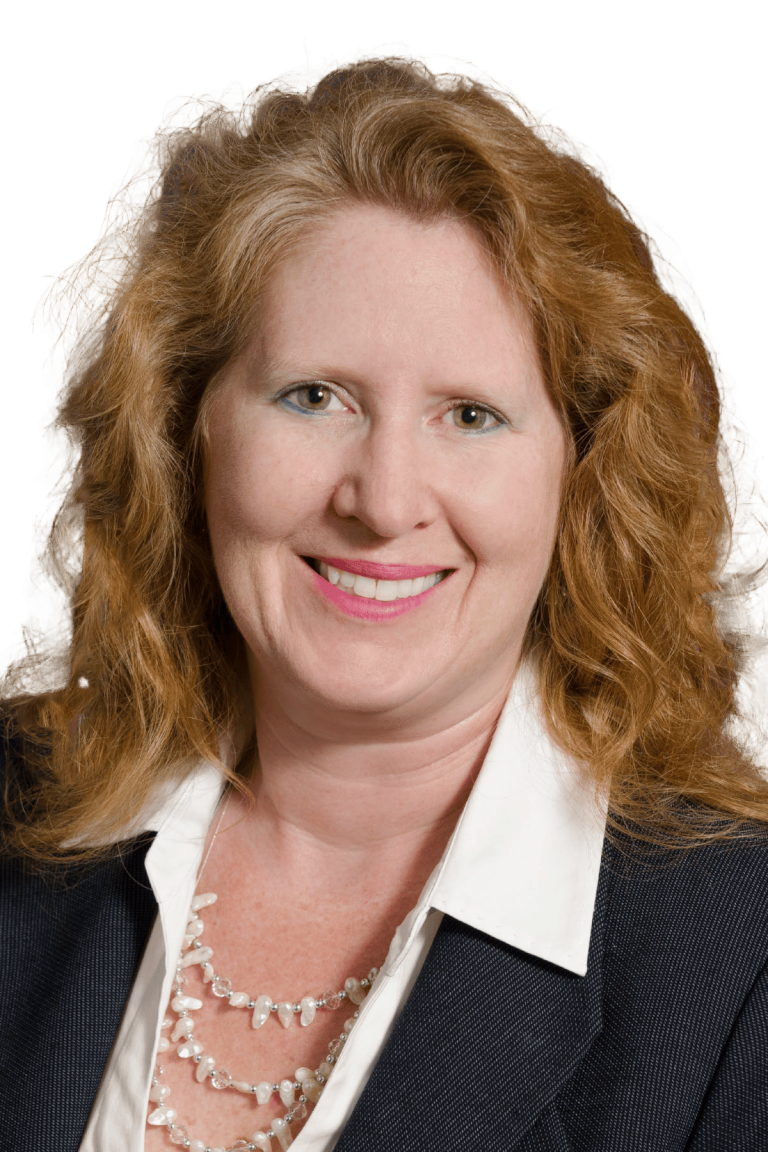
Celebrating 50 Years of Innovation: The Evolution of CGL’s Planning and Design Services
In celebration of our 50th anniversary, we’re honored to introduce our 50 Years Strong series, where we dive into the legacy, experiences, opportunities, and challenges that have shaped the foundation of our approach to the planning, design, maintenance, management and operations.
In today’s post, CGL’s Director of Planning, Chloe Jaco, sits down with Executive Vice President Stephen A. Carter, AICP, and Executive Vice President Emeritus Robert T. Goble, to reflect on the evolution of CGL’s planning and design service lines, a cornerstone of our work in the criminal justice field.
A Conversation on Revolutionizing Planning and Design with Steve Carter and Bob Goble
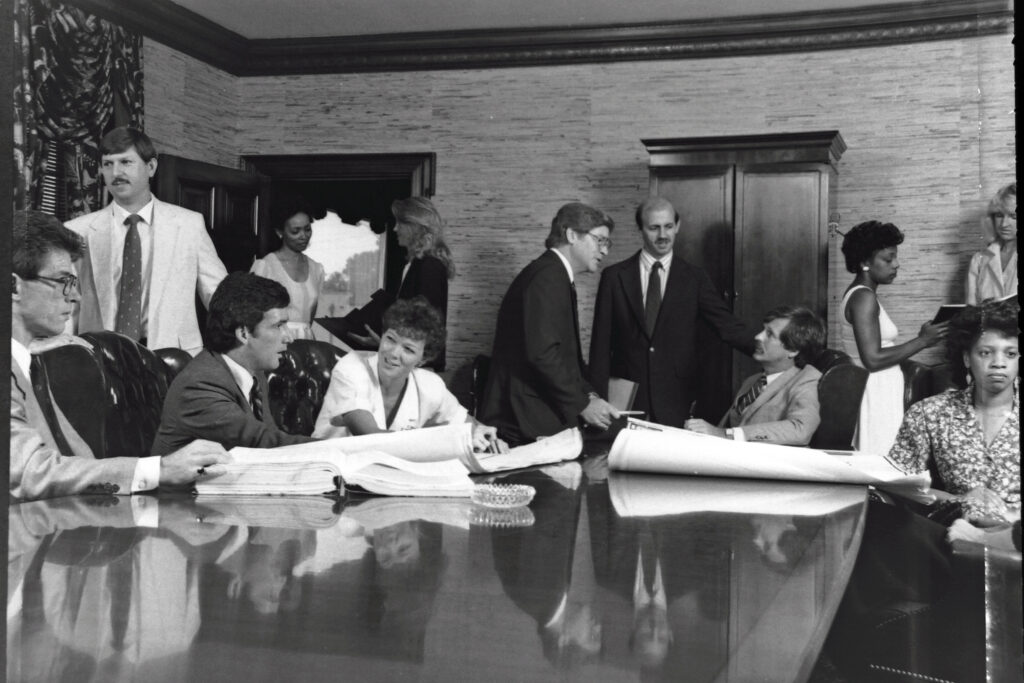
CGL staff gathered in the conference room during the early days of the company.
In honor of our 50th year in business, we’ve been doing a lot of reflecting lately on the incredible journey we’ve been on—a journey I’ve been fortunate to witness firsthand since joining CGL several decades ago.
Working alongside Steve Carter and Bob Goble, I’ve seen CGL grow from its early roots into a global leader in criminal justice consulting, navigating impactful projects, complex challenges, and countless innovations along the way. Today, I’m excited to sit down with Steve and Bob, two of the visionaries behind our Planning and Design services, to explore the evolution of this key service line. In this conversation, we’ll delve into the early days of Carter Goble Associates, the challenges they faced along the way, and how their leadership helped shape the planning and design approach that continues to define CGL’s success.
Let’s dive into the conversation.
Let’s start at the beginning…Steve, can you tell us a little about your journey into the world of criminal justice consulting and planning, and what inspired you to start Carter Goble Associates (CGA)?
Steve Carter: It started when I came out of architecture school in the mid-1960s. One of my first projects was designing the new law enforcement headquarters for South Carolina. While we were in construction, the Miranda decision came down, and suddenly the eight cells I had designed for holding became storage rooms. That’s when I realized how public policy could dramatically impact design.
Later, I studied affordable housing in London, which sparked my interest in crime and urban planning. When I moved back to the U.S., I was asked by the D.C. Public Defender’s Office to assess the conditions of confinement at the old D.C. jail. That experience really cemented my fascination with criminal justice design.
Was that the inspiration for founding CGA? Or, as we joked earlier, did you just not want to work for anyone else?
Steve Carter: (Laughs) A little of both! I spent four years with Wilbur Smith and Associates, working in London and Washington, but an architect in Columbia named Bill Geiger approached me with an opportunity I couldn’t refuse. So, in the middle of the 1974 recession, I decided to start a planning firm. There was no place to go but up!
Bob, what drew you to the field of criminal justice consulting and planning, and how did you join Steve at CGA?
Bob Goble: Steve and I had worked together at Wilbur Smith. After he decided to leave, he asked if I’d join him and I said, “Wow, let me think about it and talk to my wife, Jane.” It didn’t take a day and I was all in. We agreed I would join him on January 1, 1975. We started by doing a lot of general planning—transportation, local land use, even farmers’ markets! But when the South Carolina Department of Corrections needed a master plan, that’s when we shifted focus to criminal justice. One of our big breaks came on the heels of the SCDC master plan in 1976 when Arizona needed a master plan. They heard about our work in South Carolina, and together those two state level plans really set us on the national stage coast to coast.
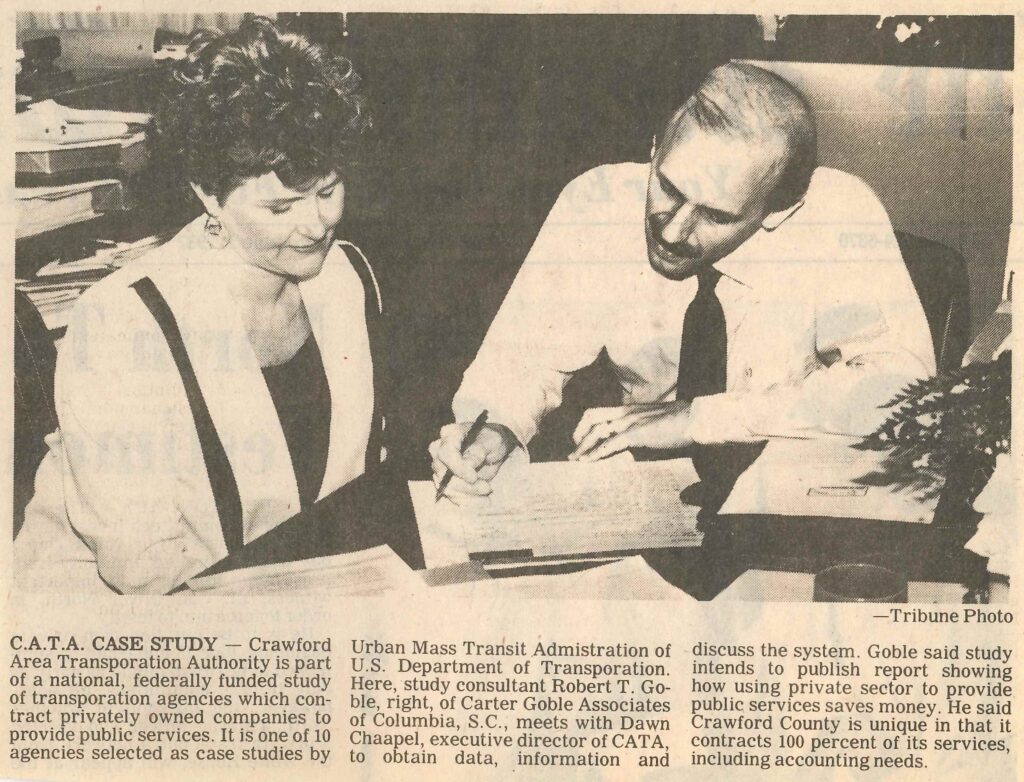
In the beginning, CGA’s work involved a lot of general planning, including transportation.
When you reflect on the early days of CGA, what were some of the initial challenges you faced, and how did you overcome them?
Steve Carter: Initially, it was about getting known. We had some projects in South Carolina, but most of our work was outside the state. The recession hit land planning hard in the mid-1970s, so we had to find new opportunities. It was just Kay Bailey and me in the office at first. The deal was if we could last six months, Bob would join me. We made it through, and from there, it was about generating projects to stay in business.
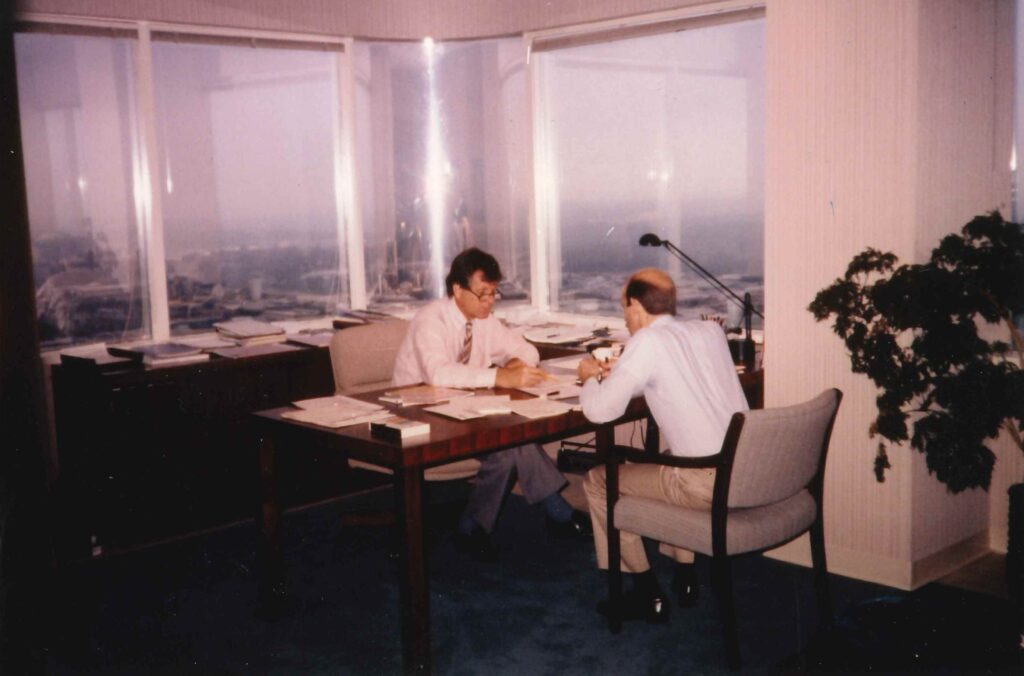
The early days of CGA.
Steve, what personal philosophies or beliefs have guided you in your career?
Steve Carter: I grew up in a stable home with values like integrity, trust, and honesty, and those principles carried over into my work. I believe in working hard—you can outwork your own intelligence. We brought those values into CGA, and we’ve operated by the golden rule: “Do unto others as you’d have them do unto you.” That philosophy has shaped how we do business.
Bob, what about you? What shaped your approach to criminal justice planning and design?
Bob Goble: Early on, I realized that incarceration isn’t just about locking people up—97% of those incarcerated will return to society. It became clear to me that we need to plan facilities that help rehabilitate people, not just confine them. One of the early projects Steve developed was a direct supervision detention facility in Prince George’s County, Maryland, which aimed to create a more humane direct supervision environment. Seeing those ideas come to life with an understanding client was incredibly rewarding.
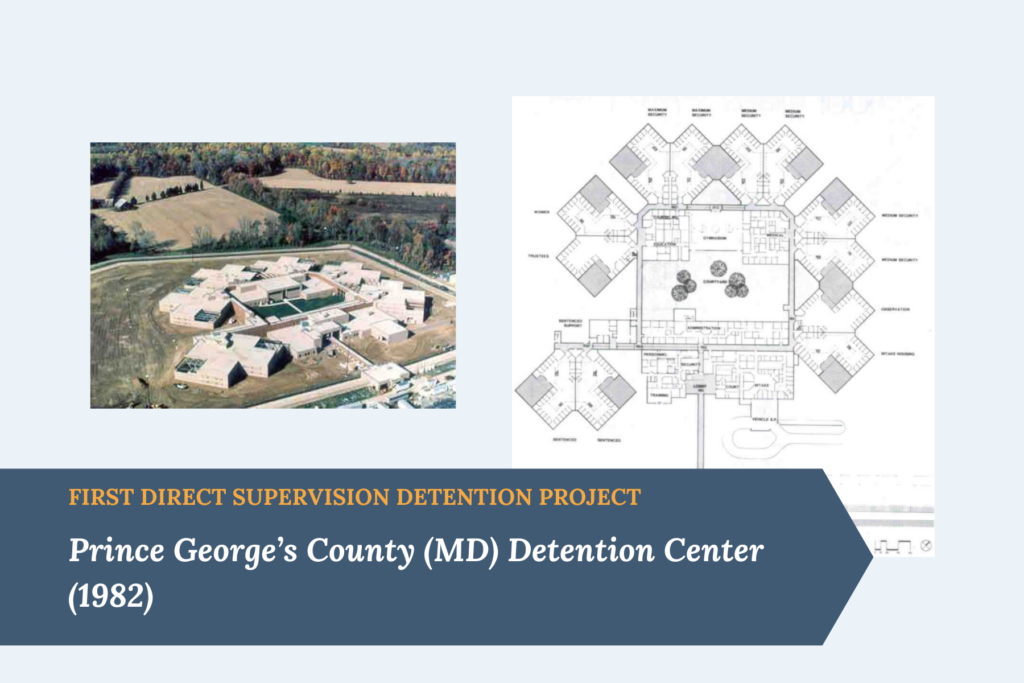
A direct supervision detention center in Prince George’s County, Maryland was one of CGA’s first projects. It aimed to create a more humane direct supervision environment.
Steve, how do you think CGL has influenced the planning process in the criminal justice system?
Steve Carter: We were in the right place at the right time. When the Law Enforcement Assistance Administration (LEAA) began offering funding to improve criminal justice systems in the early 1970s, we had already gained experience doing feasibility studies. Planning wasn’t a formalized service in criminal justice design at the time—it was usually part of architecture. But we saw planning as the critical first step. It’s what I call “pre-architecture”—guiding decisions based on evidence before the design even starts.
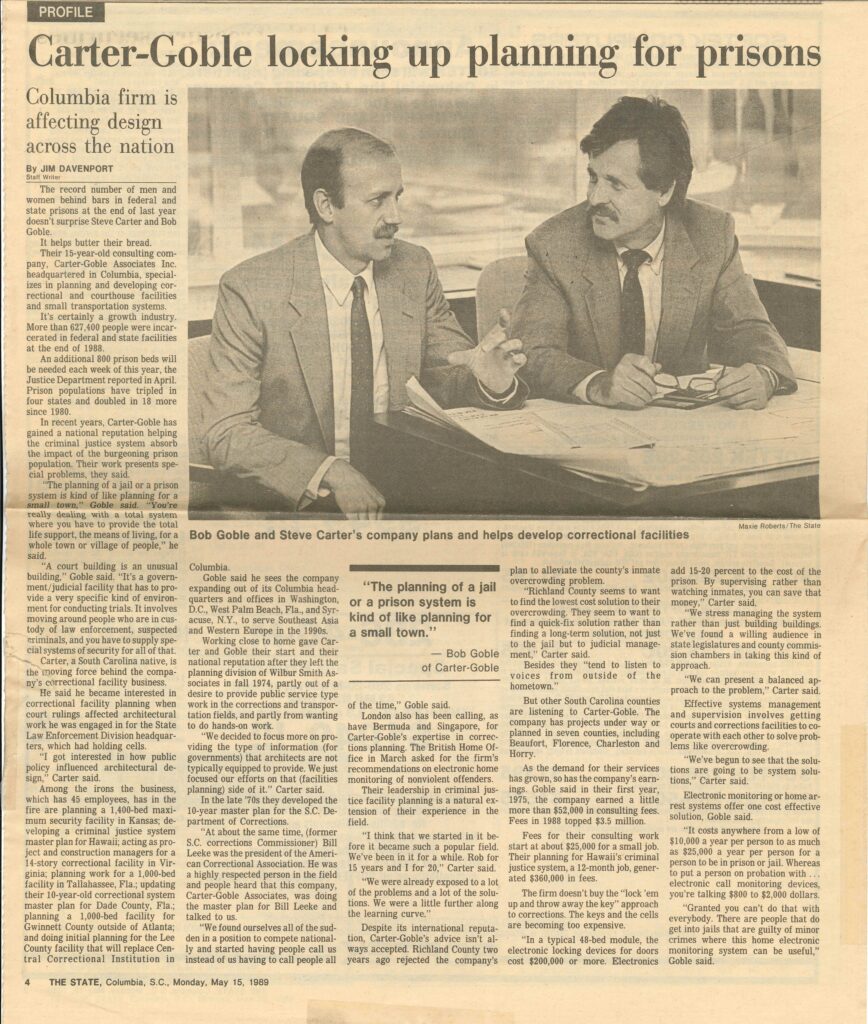
When CGA first began, planning wasn’t a formalized service in criminal justice design.
How has the shift toward restorative justice influenced your planning and design work?
Steve Carter: Restorative justice has only become more prominent in the last decade or so. It’s a concept that’s maturing—decisions now consider the victim, the family, and the person who committed the crime. Planning for facilities with a restorative mindset is different. We’re moving towards a more “normative” approach, trying to create environments that mirror everyday life rather than focusing solely on punishment. Society hasn’t fully embraced this yet, but I think CGL is well-positioned to respond to these changes as they continue to unfold.

The San Diego County Las Colinas Detention Center is a prime example of a normative approach to facility planning and design. Pictured is the dayroom featuring ample natural light, open spaces, and bright colors.
Bob, can you talk about some of the milestones in CGL’s history?
Bob Goble: Some that stand out are our several projects in Singapore, starting in 1989 and continuing until 2014. I wrote a letter to then Director Tee Tua Ba after my wife and I saw him on a television interview talking about the need to totally change and upgrade Singpore’s prisons. That led to a long-standing relationship where we helped transform the Singapore prison system and more, culminating in projects including the new Changi Prison, the Selarang Park Transitional Complex, a new juvenile boys detention center, a halfway house model program, their subordinate courts expansion, a new supreme court space program, and security guidelines for the new national mental health center. Singapore has become a model of humane transformative incarceration. It was an incredible opportunity to see a country’s leaders and citizenry embrace change on such a large scale beyond just their prison service.
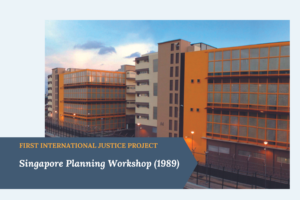
CGL’s work in Singapore began in 1989 and continued until 2014. The long-standing relationship helped transform the Singapore prison system and more.
Technology has transformed so much in recent years. How has it impacted planning and design at CGL?
Steve Carter: It’s been remarkable to see the shift. Back in the early days, we were using electric typewriters. Now we’re using advanced modeling and AI-driven tools to assist in planning and design. The integration of technology has improved everything from space planning to operational efficiencies. But we need to be cautious with AI—it has potential, but we don’t want to lose the human element in decision-making.
What do you believe has contributed most to CGL’s longevity and success?
Steve Carter: Hard work and trust. We spend time getting to know our clients and building relationships that last for decades. Clients trust us because we listen and work alongside them, understanding their needs before offering solutions.
Bob Goble: Listening is crucial. You have to be open to different perspectives and be willing to explore options. We’ve also been fortunate to work with talented, diverse teams who bring expertise from across the criminal justice system. CGL’s recent addition of JFA gives a valuable addition to our planning and design work, but also for our correctional operations consulting by including one of the most sophisticated, widely proven correctional population projection models in the USA.
A Legacy of Innovation and a Future of Opportunity
As we celebrate our 50th year, it’s clear that the values the company was built on—integrity, trust, hard work, and innovation—are still guiding us today. From the early days of planning master plans for state correctional systems to embracing the latest in technology and restorative justice models, CGL continues to shape the future of justice facility design and move the needle forward to create positive change.
Looking ahead, there’s much to be excited about. In the next installment of this anniversary series, we’ll explore CGL’s approach to facility maintenance and management, diving into our rich operations history and showcasing how our work extends far beyond design to ensure that facilities operate at their best for decades to come. Stay tuned!
